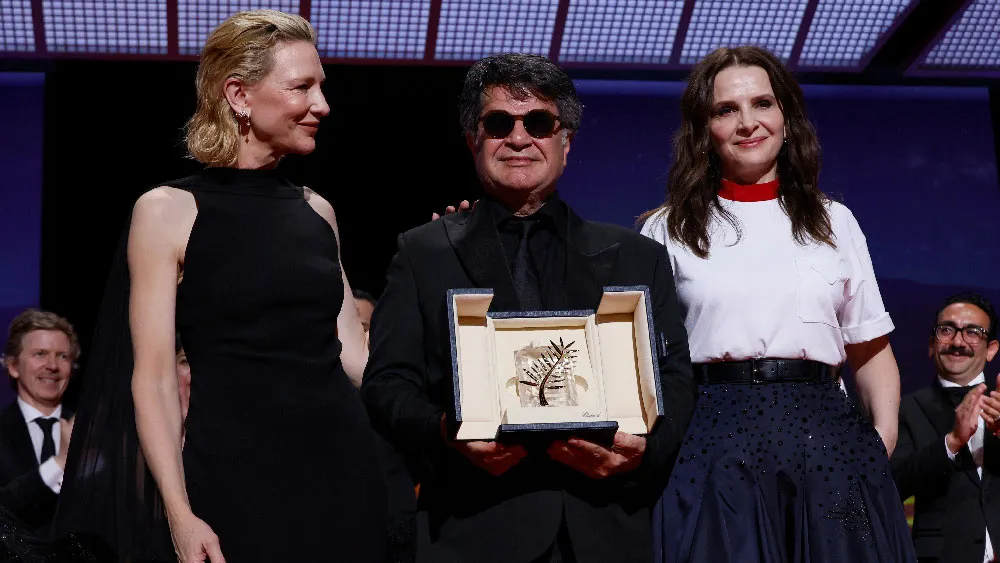November 2, 2014
LGBT History Month Profiles: Marc Jacobs & Sylvester
Kilian Melloy READ TIME: 4 MIN.
October is LGBT History Month. Each week throughout the month, Hotspots will be profiling two of the people named to Equality Forum's LGBT History Month icon list, to showcase the great things LGBT people have done, and are doing.
Marc Jacobs was born in New York City on April 9, 1963. He was a 1981 graduate of the High School of Art and Design and afterwards he went on to study at the Parsons School of Design. He designed his first fashion line in 1986, and the next year he won the Council of Fashion Designers of America's Perry Ellis Award for New Fashion Talent, the fashion industry's highest honor for new designers.
He was hired at Perry Ellis in 1988, where he worked in the womenswear division. In 1992, he won the Council of Fashion Designers of America's Women's Designer of the Year Award. In 1993, Jacobs launched his own licensing and design company with his business partner, Robert Duffy. The next year, he designed his first ready-to-wear men's line.
In 1997, Louis Vuitton took notice of Jacobs and hired him on as their creative director. Shortly after arriving at Louis Vuitton, he created the company's first ready-to-wear fashion line. While working at Louis Vuitton, he started a secondary fashion line, Marc by Marc Jacobs, which he debuted in 2001. His company was valued at $75 million in 2006, when it expanded from the United States and Europe into Japan.
There are currently approximately 300 Marc Jacobs retail stores in 60 countries around the world. He has worked with supermodel Kate Moss and rapper Kanye West for his Louis Vuitton designs and has partnered with singer Miley Cyrus and actress Jessica Lange for his Marc Jacobs line. He left Louis Vuitton after the unveiling of the Spring/Summer 2014 line at Paris Fashion Week to focus more time and energy on his own clothing line and company.
Marc Jacobs' fashion is a melange of many different inspirations, such as French haute couture, Northeastern "preppy" style, and even the 1990s Seattle grunge look. In fact, he was dismissed from Perry Ellis in 1992 when he designed a line with grunge influences; higher-ups did not approve.
Due to his influence in the fashion world, he has been named one of the top 100 movers and shakers in the world by Time magazine, and is a perennial selection for Out's Power List. He has designed a marriage equality T-shirt, the proceeds of which benefited the Human Rights Campaign. He is also passionate about cancer research; in the past he has recruited celebrities to wear designs of his; the sales of these designs raised money that was donated to further melanoma research at the NYU Medical Center.
Sylvester James, Jr. was born on September 6, 1947 in the Watts neighborhood of Los Angeles, California. He was raised Pentecostal and attended the Palm Lane Church of God in Christ in South Los Angeles.
He recognized his effeminate tendencies, and later his homosexuality, from the time he was a child. His conservative congregation turned against the child and he was forced out of the church by the time he turned 13. Sylvester entered the Los Angeles gay scene when he left his mother's home at the age of 15. While living with his grandmother, he formed a gang with other gay men and a few transgender women, called the Disquotays. By the end of the 1960s, Sylvester had perfected his personal style, focusing on androgynous looks.
Sylvester recorded a demo album in San Francisco in early 1972. For this album he recruited five people to perform with him, and for the next two years they would play together as "Sylvester and His Hot Band." They made their first national tour in 1973, and were not well-received in many Southern states where they did not approve of his flamboyant nature or the fact that he was black. His band left him at the end of 1974 to pursue other avenues. It was finally Sylvester's time to break into the mainstream with his self-titled 1977 release and the 1978 album "Step II." Around this time he also befriended Harvey Milk and Bette Midler, the latter insisting that he receive a cameo role in the film "The Rose," playing a drag queen.
The songs from the "Step II" album became hits around the world, in particular "You Make Me Feel (Mighty Real)" and "Dance (Disco Heat)". He would go on to release three more albums in the next three years, capitalizing on the disco sound. As the 1970s turned into the 1980s, he began to focus on Hi-NRG dance music, and the 1982 single "Do Ya Wanna Funk" topped the dance charts, as did the 1986 release "Someone Like You."
In the final years of his life, he was noted for his AIDS activism, especially as it became evident that he was suffering from the illness and was becoming increasingly frail. The 1988 Castro Street Fair in San Francisco was dedicated to Sylvester, and even though he couldn't attend, he could hear the crowds cheering his name from his apartment. He succumbed to complications from AIDS on December 16, 1988 at the age of 41.
Kilian Melloy serves as EDGE Media Network's Associate Arts Editor and Staff Contributor. His professional memberships include the National Lesbian & Gay Journalists Association, the Boston Online Film Critics Association, The Gay and Lesbian Entertainment Critics Association, and the Boston Theater Critics Association's Elliot Norton Awards Committee.

 Copyright HotSpots! Magazine. For more articles from HotSpots! visit
Copyright HotSpots! Magazine. For more articles from HotSpots! visit 
